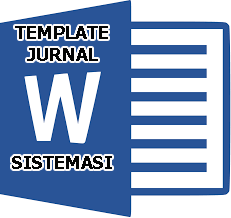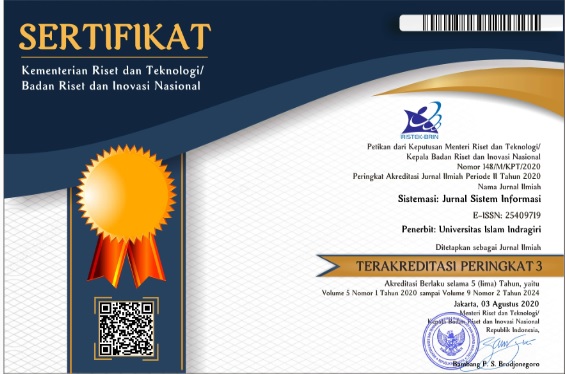Applying Machine Learning to Predict Intercity Bus Ticket Prices During the Holiday Season
Abstract
Keywords
Full Text:
PDFReferences
K. Talluri and G. Van Ryzin, “Revenue Management under a General Discrete Choice Model of Consumer Behavior,” Management Science, Vol. 50, No. 1, pp. 15–33, 2004.
T. M. Oshiro, P. S. Perez, and J. A. Baranauskas, “How many Trees in a Random Forest?,” in Machine Learning and Data Mining in Pattern Recognition: 8th International Conference, MLDM 2012, Berlin, Germany, July 13-20, 2012. Proceedings 8, Springer Berlin Heidelberg, 2012, pp. 154–168.
A. Y. Samudra, “Pendekatan Random Forest untuk Model Peramalan Harga Tembakau Rajangan di Kabupaten Temanggung,” Bachelor Thesis, Universitas Sanata Dharma, Yogyakarta, 2019.
M. J. Wulansari, “Analisis Faktor-faktor yang mempengaruhi Seseorang terkena Penyakit Diabetes Melitus menggunakan Regresi Random Forest (Studi Kasus: Data Diabetes di Virginia Amerika Serikat),” 2018.
N. Nur, F. Wajidi, S. Sulfayanti, and W. Wildayani, “Implementasi Algoritma Random Forest Regression untuk memprediksi Hasil Panen Padi di Desa Minanga,” Jurnal Komputer Terapan, Vol. 9, No. 1, pp. 58–64, 2023.
C. Haryanto, N. Rahaningsih, and F. M. Basysyar, “Komparasi Algoritma Machine Learning dalam memprediksi Harga Rumah,” JATI (Jurnal Mahasiswa Teknik Informatika), Vol. 7, No. 1, pp. 533–539, 2023.
S. Fachid and A. Triayudi, “Perbandingan Algoritma Regresi Linier dan Regresi Random Forest dalam memprediksi Kasus Positif Covid-19,” Jurnal Media Informatika Budidarma, Vol. 6, No. 1, pp. 68–73, 2022.
Y. A. Zebua et al., “Prediksi Penetapan Tarif Penerbangan menggunakan Auto-Ml dengan Algoritma Random Forest,” Jurnal Tekinkom (Teknik Informasi dan Komputer), Vol. 5, No. 1, pp. 115–122, 2022.
M. L. Suliztia, “Penerapan Analisis Random Forest pada Prototype Sistem Prediksi Harga Kamera Bekas menggunakan Flask,” 2020.
I. Reis, D. Baron, and S. Shahaf, “Probabilistic Random Forest: A Machine Learning Algorithm for Noisy Data Sets,” The Astronomical Journal, Vol. 157, No. 1, pp. 1–12, 2018.
B. F. Darst, K. C. Malecki, and C. D. Engelman, “Using Recursive Feature Elimination in Random Forest to Account for Correlated Variables in High Dimensional Data,” BMC Genetics, Vol. 19, No. 1, pp. 1–6, 2018.
C. Luong and N. Dokuchaev, “Forecasting of Realised Volatility with the Random Forests Algorithm,” Journal of Risk and Financial Management, Vol. 11, No. 4, pp. 1–15, 2018, doi: 10.3390/jrfm11040061.
B. M. Pavlyshenko, “Machine-Learning Models for Sales Time Series Forecasting,” Data, Vol. 4, No. 1, p. 15, 2019, doi: 10.3390/data4010015.
R. R. Abadi, I. Nursyamsi, and A. R. Syamsuddin, “Effect of Customer Value and Experiential Marketing to Customer Loyalty with Customer Satisfaction as Intervening Variable (Case Study on Gojek Makassar Consumers),” The Asian Journal of Technology Management, Vol. 13, No. 1, pp. 82–97, 2020.
M. Huang and R. T. Rust, “Artificial Intelligence in Service,” Journal of Service Research, pp. 2–6, 2018, doi: 10.1177/1094670517752459.
S. Russel and P. Norvig, Artificial Intelligence: A Modern Approach, New Jersey: CreateSpace Independent Publishing Platform, 2010.
DOI: https://doi.org/10.32520/stmsi.v14i5.5350
Article Metrics
Abstract view : 877 timesPDF - 106 times
Refbacks
- There are currently no refbacks.

This work is licensed under a Creative Commons Attribution-ShareAlike 4.0 International License.









